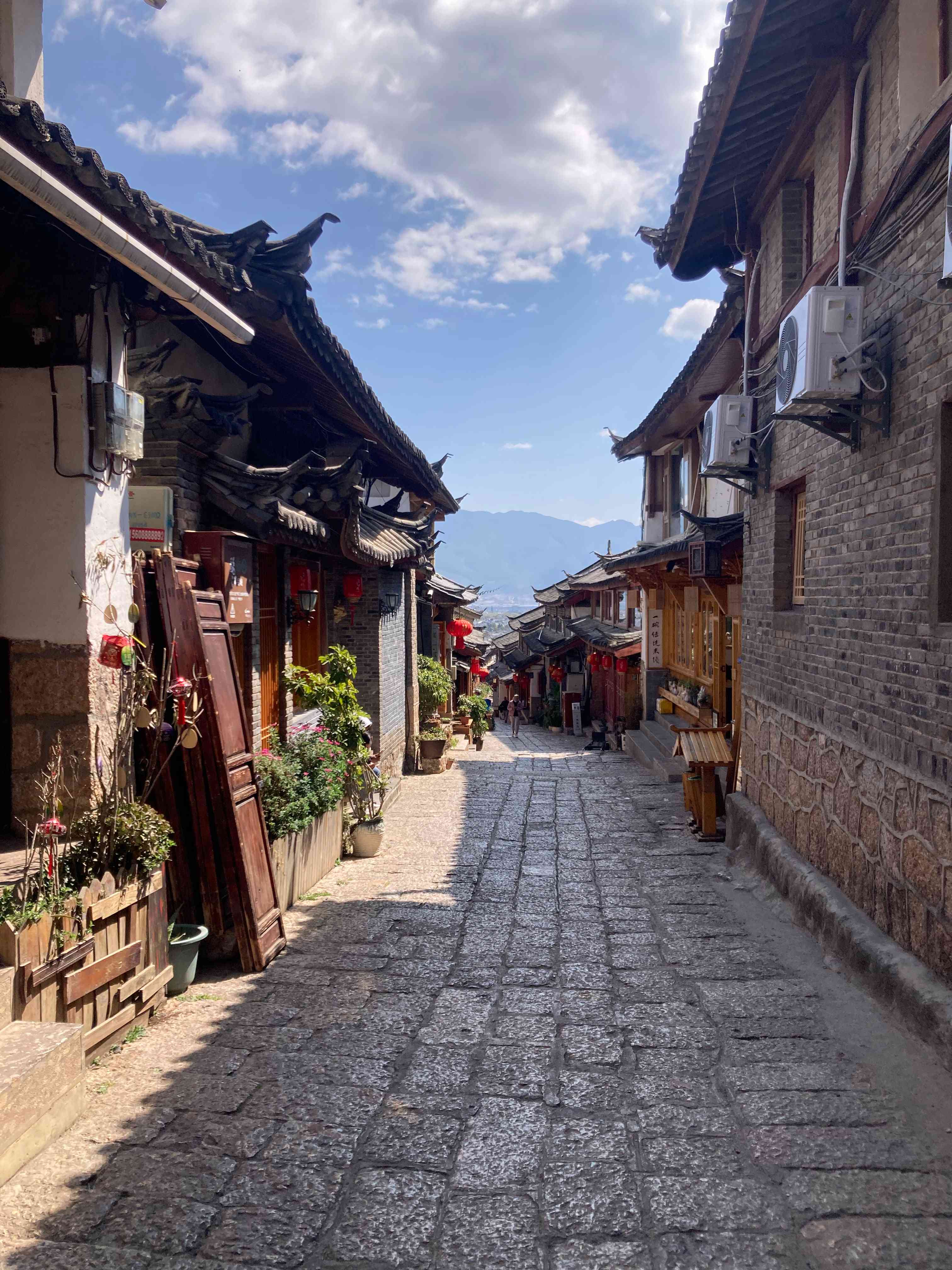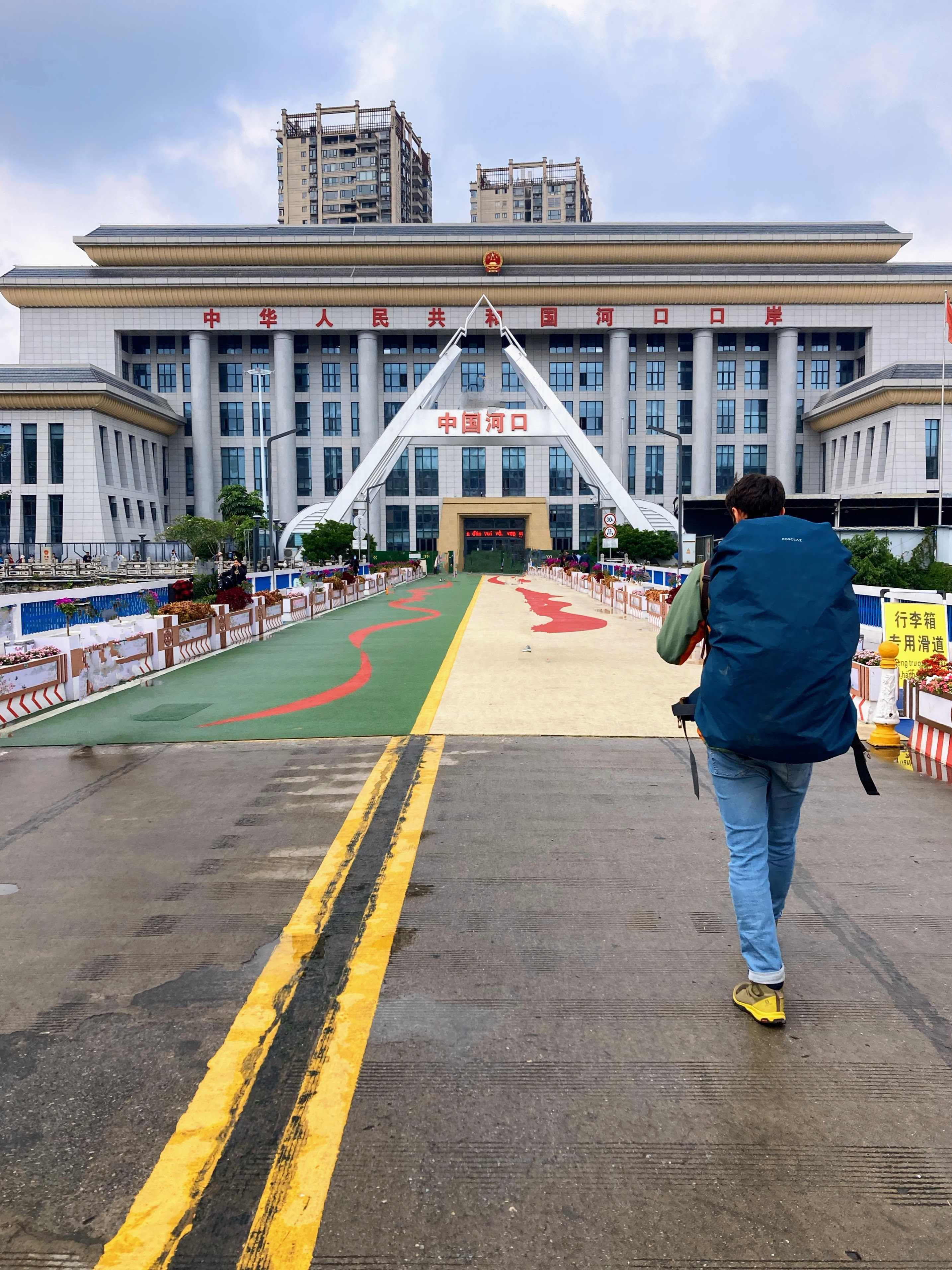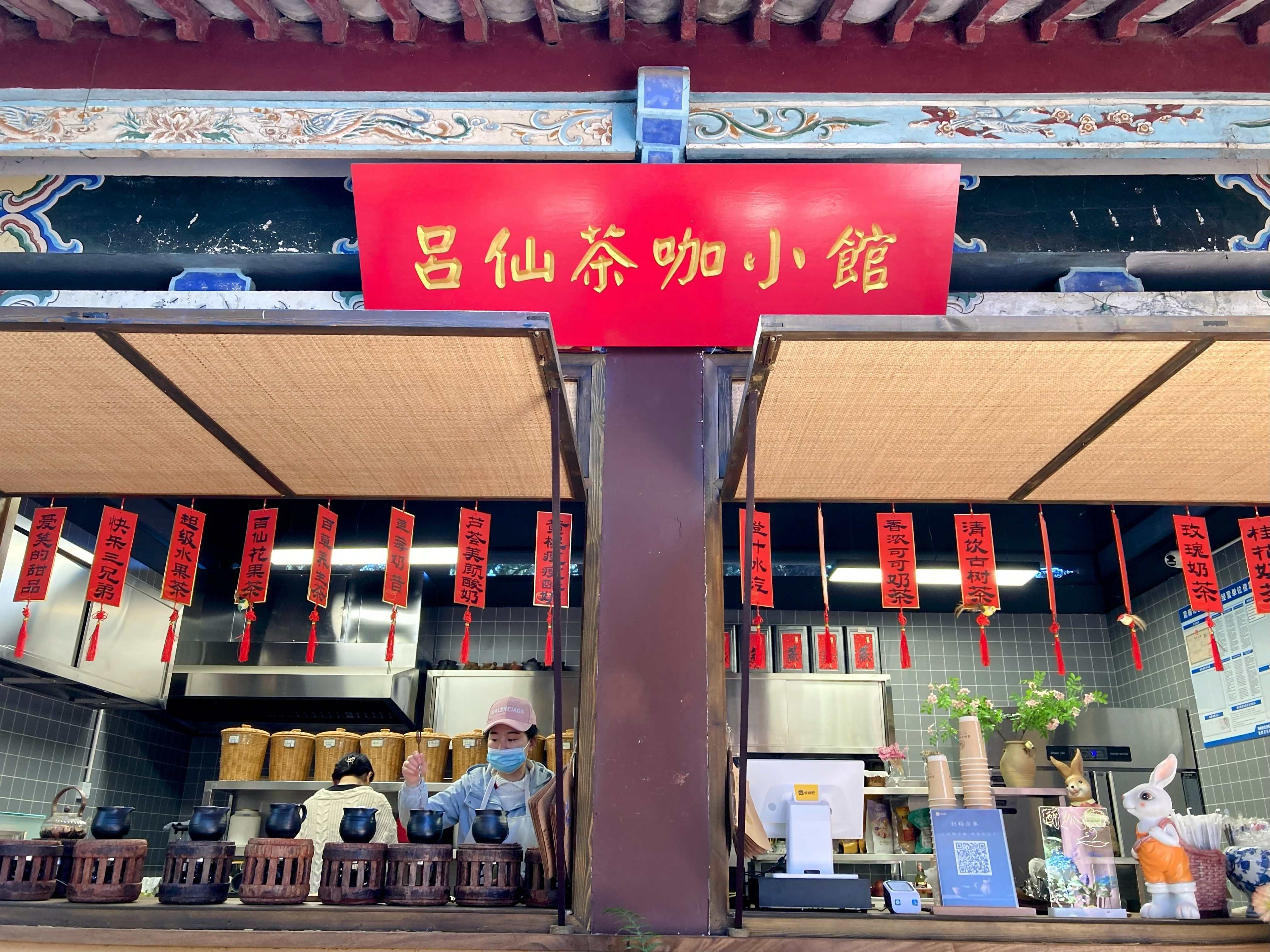In March 2024 we traveled from Lao Cai, North Vietnam, to China, without a clear plan for our itinerary. In this article, we wrote how we crossed the border via land. Considering the location we decided to start our trip from the beautiful Yunnan region, and it was a great choice and a big surprise since we did not know anything about it before.
Yunnan is a vast and beautiful region in the southwest of China, north of Vietnam and Laos, and east of Tibet. Well-known and visited in China, It still needs to be discovered among foreigners, despite its diverse landscape, well-preserved historical towns, and vibrant capital, Kunming. The region of Yunnan has a size of almost 400.000 Km2, bigger than Germany or Italy. It is also the most diverse region of China in terms of ethnicity: 25 official ethnic groups out of the 55 groups recognized in China, making it extraordinarily rich in cultures, traditions, languages, and even religion. If you want an off-the-beaten-path experience (among foreigners, you will encounter several Chinese tourists) and backpack through a mix of cities and natural wonders, Yunnan is the right place for you.

Since China finalized the railway connection with Laos, Yunnan can also be a great addition to a trip in the Mekong region.
In this article, we crafted the perfect itinerary for 1 week, 10 days, or 2 weeks in the region of Yunnan.
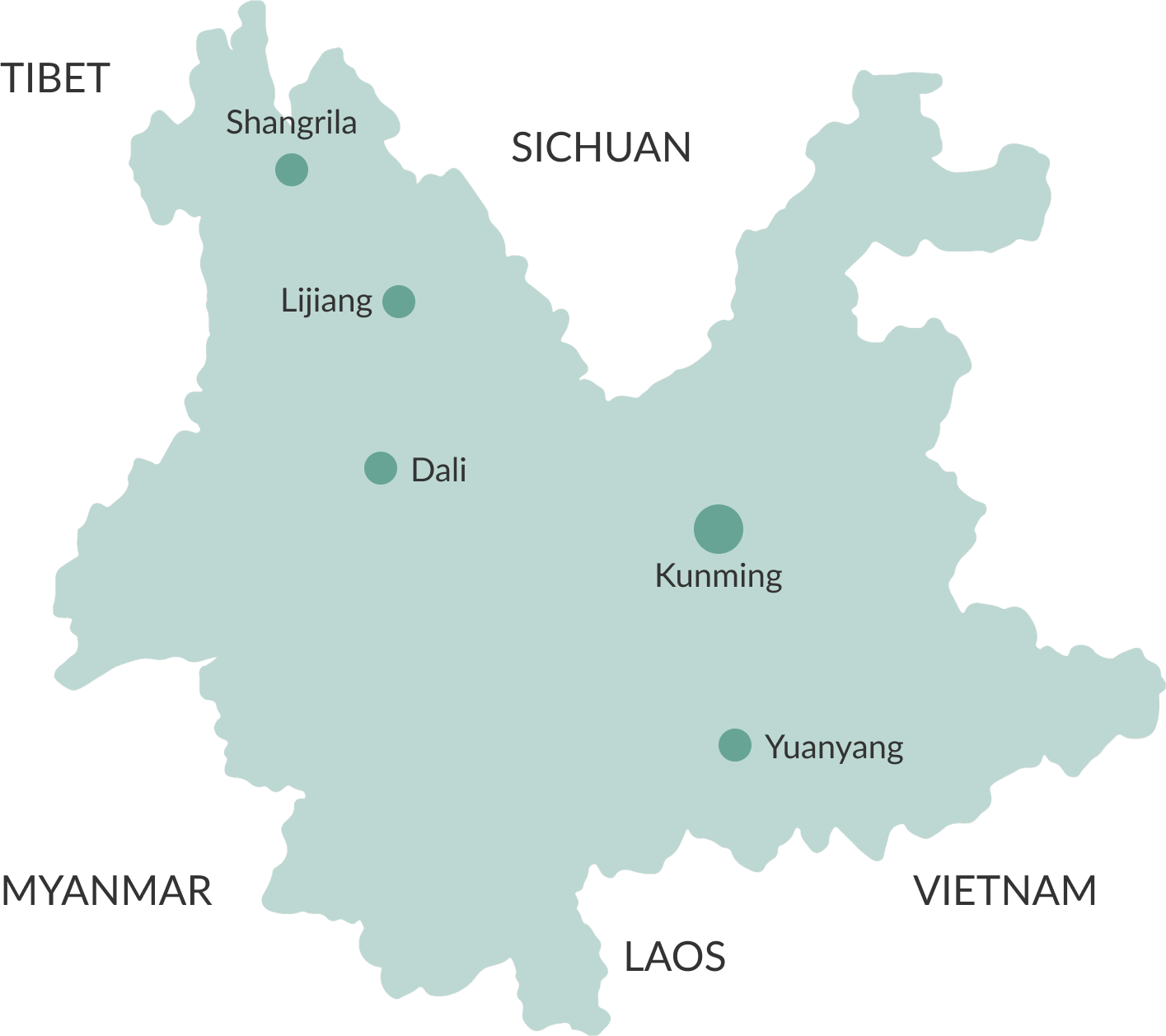
7 Days Itinerary
- Day 1-3: Kunming
- Day 4-5: Dali/Lijiang. You can reduce it to one night if you want to hike the Tiger Leaping Gorge
- Day 6-7: Shangri-La. You can reduce it to one night if you want to hike the Tiger Leaping Gorge.
10 days itinerary - Loop (Our Itinerary)
- Day 1-3: Kunming
- Day 4-5: Shangri-La
- Day 6-7: Tiger Leaping Gorge.
- Day 8: Lijiang
- Day 9: Dali
- Day 10: Kunming
2 weeks itinerary
- Day 1-3: Kunming
- Day 3-4: Yuanyang Rice Terraces
- Day 5-6: Kunming
- Day 7-8: Dali
- Day 9-10: Lijiang
- Day 11-12: Tiger Leaping Gorge.
- Day 13-14: Shangri-La
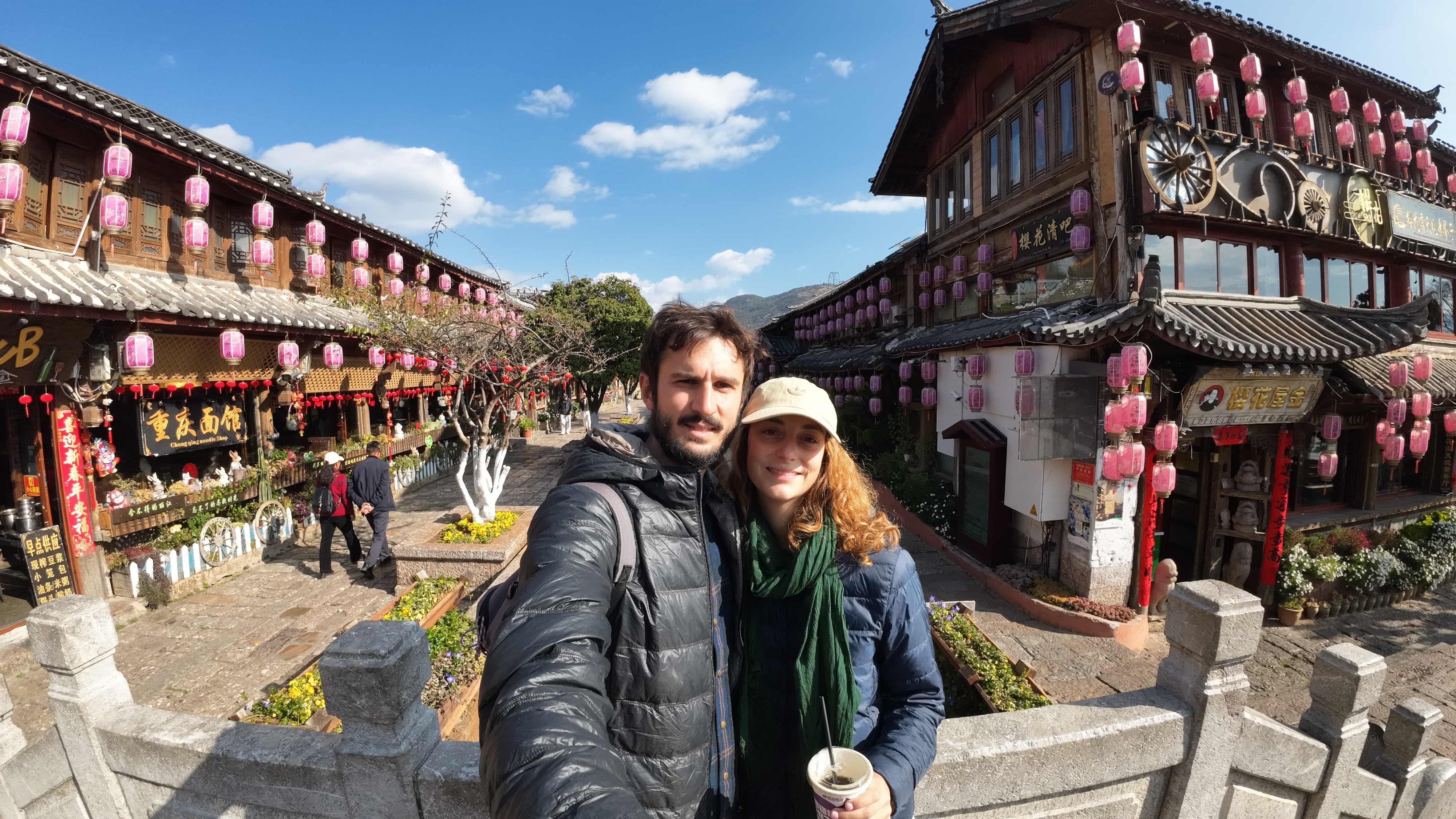
Practical details
To start from Yunnan’s capital, Kunming, is a great idea because it is well connected to every part of the country via bullet train, has an international airport, and is also easily reachable from north Vietnam and Vientiane in Laos.
From Kunming, all the cities listed in the itineraries are reachable by train (except the Tiger Leaping Gorge which is only served by buses), and we actually went directly by train from there to Shangri-La, making our way back to Kunming stopping in all other locations.
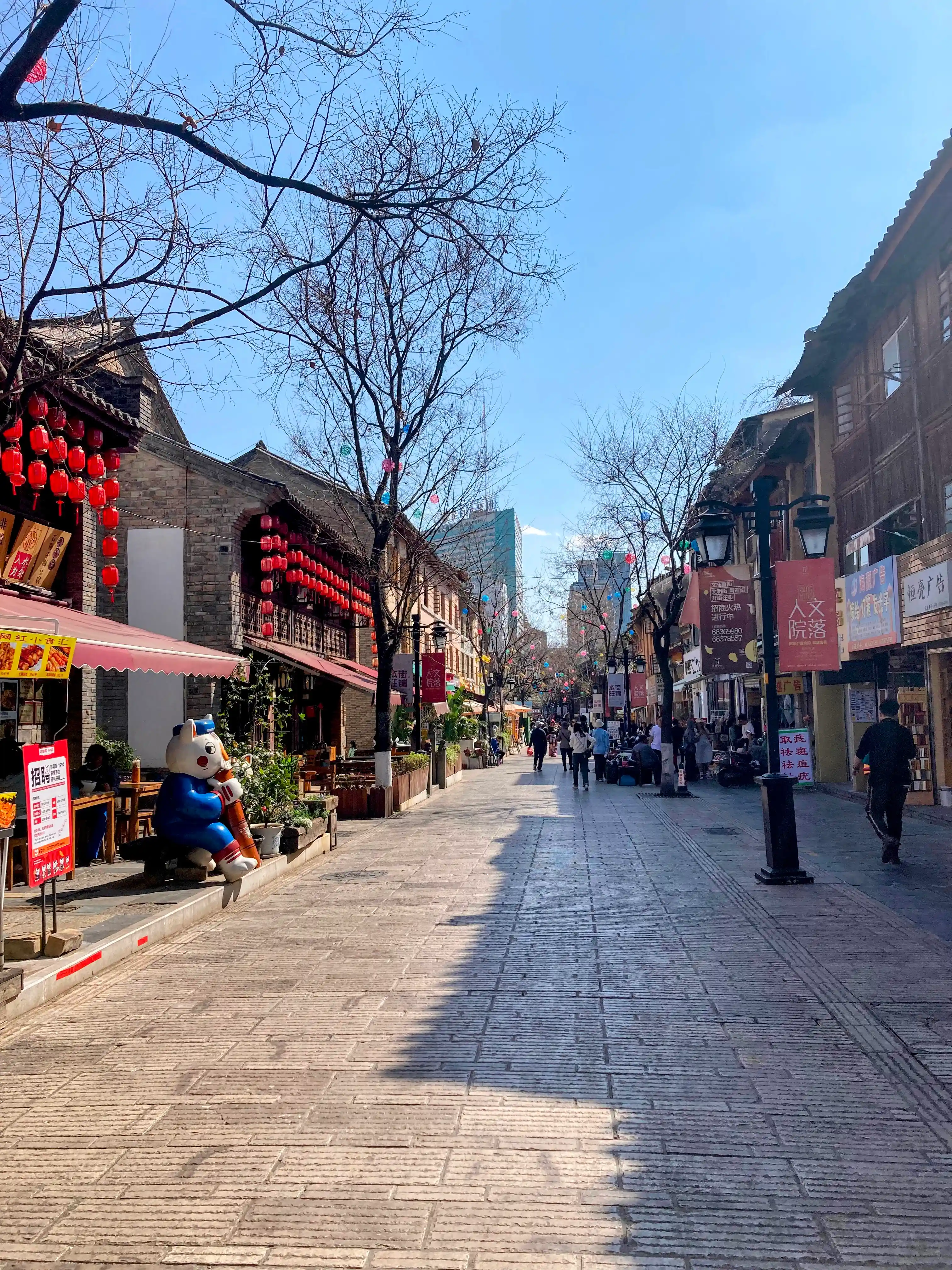
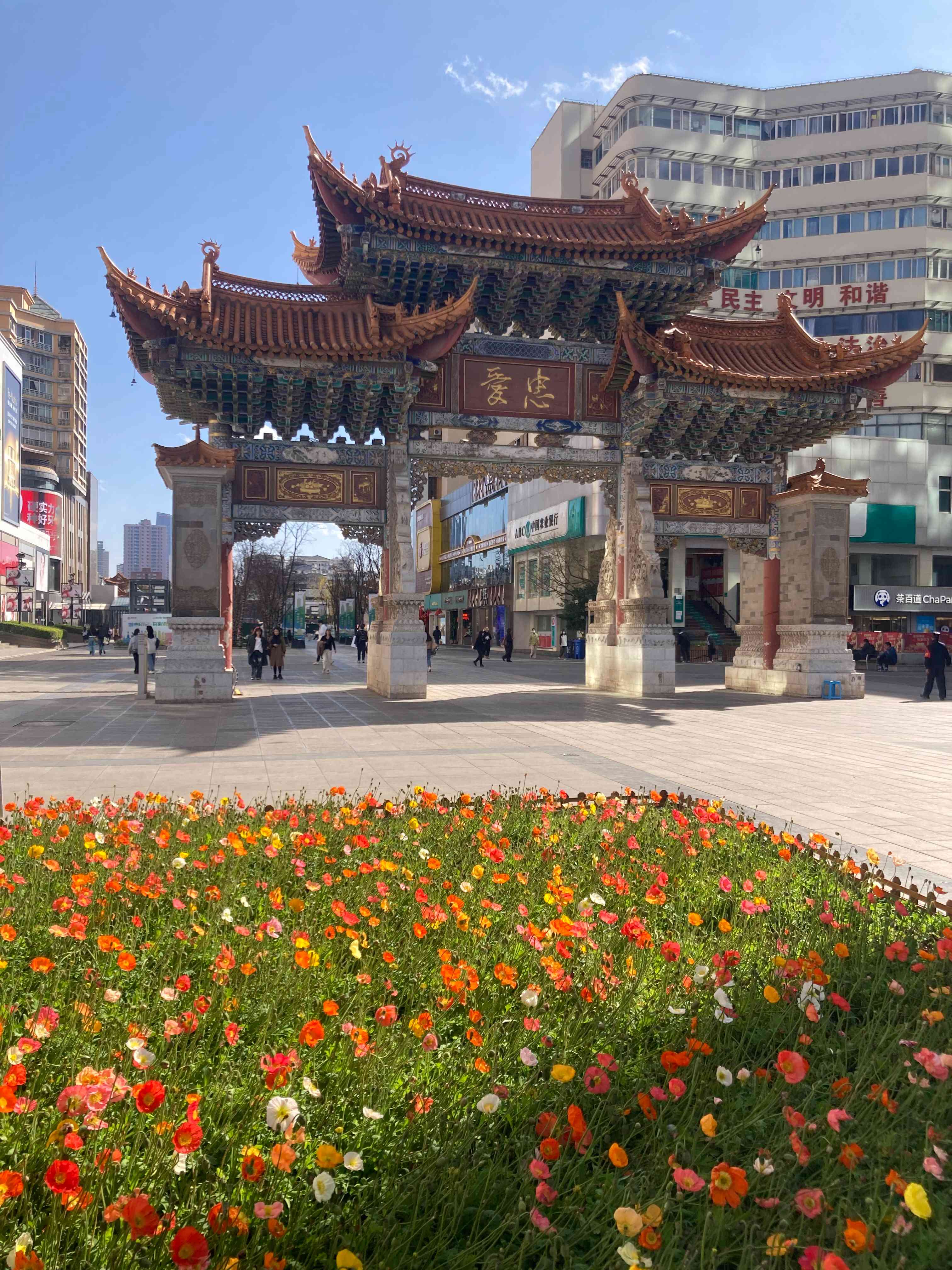
From Kunming, it is also possible to visit Yuanyang rice terraces with a direct bus, leaving from Kunming South Coach Terminal to Yuanyang Xinjie Bus Station (元阳新街客运站), which takes about 6.5 hours, so we suggest you plan at least 2 days if you want to visit them. Unfortunately, we didn’t have the time to go there, but we heard from other travelers that they were gorgeous.
Dali is 2 hours away from Kunming by train. You can check times and tickets on Trip.com but be careful to select the correct Dali (大理) because there is more than one city with this name in China.
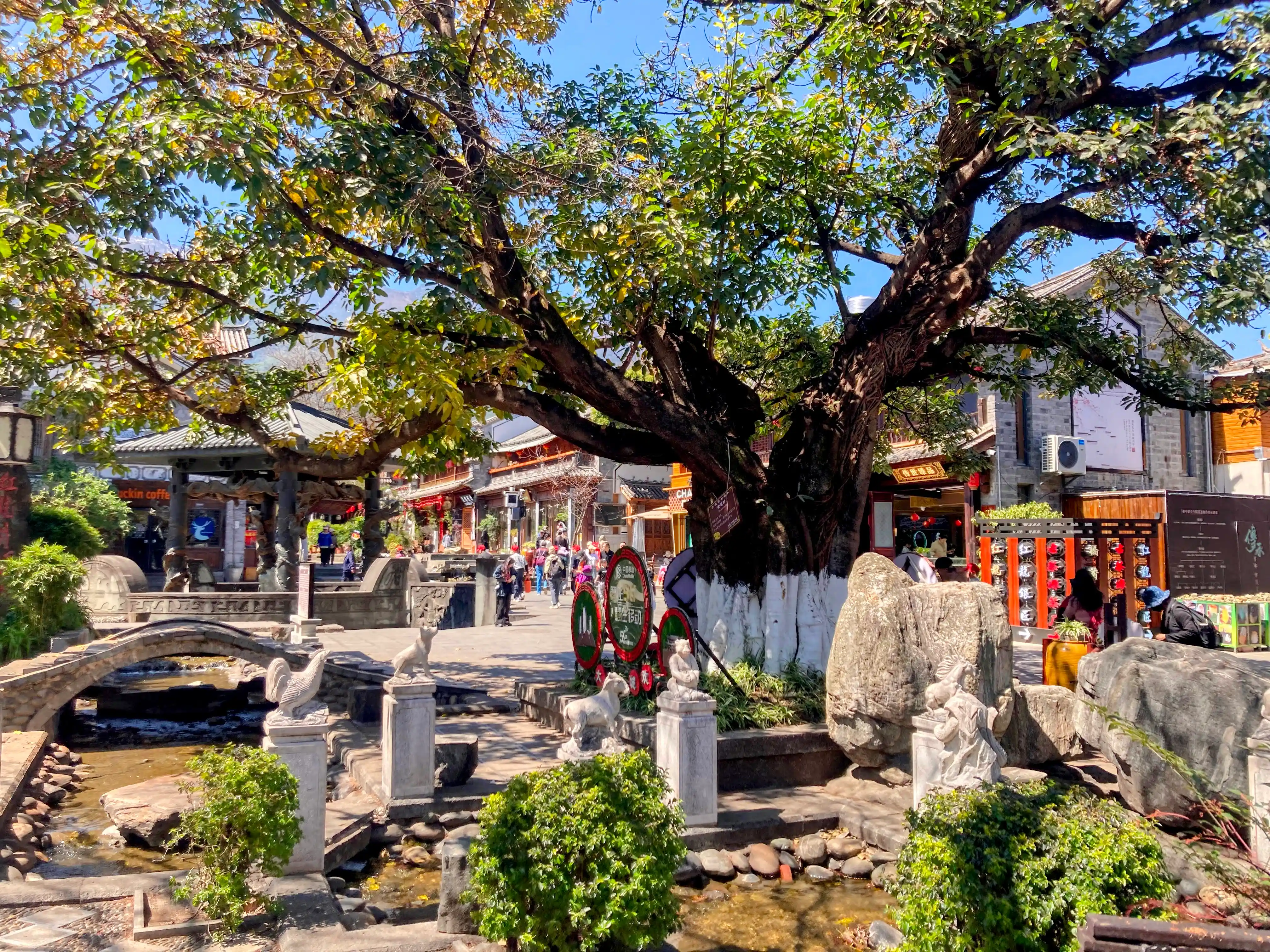
Lijang and Dali are both beautiful but if you have only one week we suggest you choose either one or the other. Our personal favorite of the two was Lijiang, because of its charming city center, but it can get very crowded with tourists and in some parts looks like a themed park.
Lijiang is also reachable by train from Kunming in 3.5 hours, and tickets are available on Trip.
If you plan to hike the upper path of the Tiger Leaping Gorge consider spending at least two nights there. You can reach the beginning of the ticket office by bus from Lijiang or Shangri-La. From Tina’s house (a guesthouse at the end of the path) it is possible to catch busses to Lijiang or Shangri-La. In March 2024 there are two busses available for Lijiang at 2:00 pm and 3:00 pm. If you just want to explore the middle Tiger Leaping Gorge (the path closer to the river) you need one night, two days.
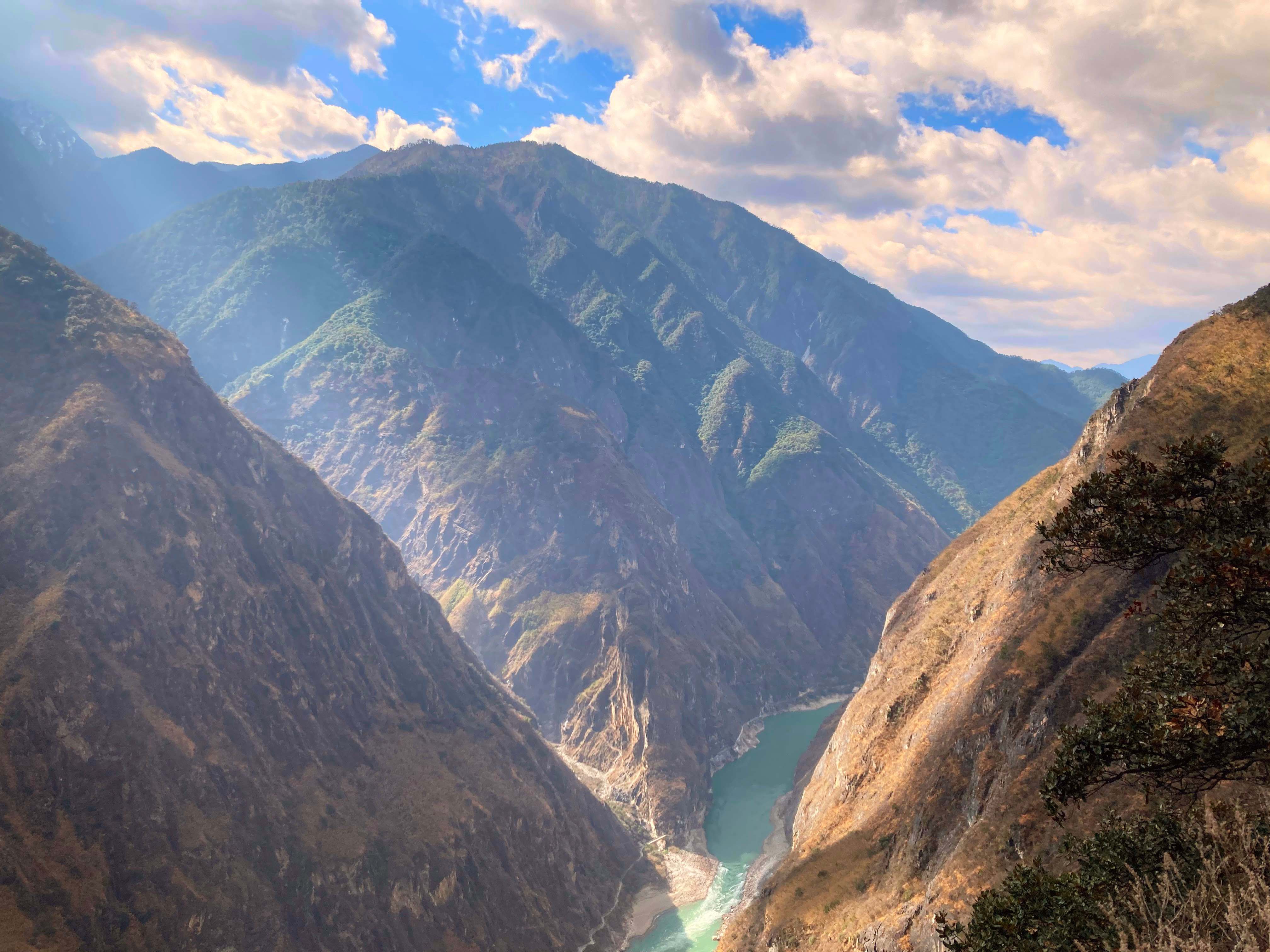
If you prefer to go directly from Dali or Lijiang to Shangri-La you can do that by train. From Dali, there is one direct train per day (4h), or various options with one change. It is only a one-hour direct train from Lijiang. If you buy the ticket online on Trip.com the Shangri-La station is called Xianggelila (香格里拉).
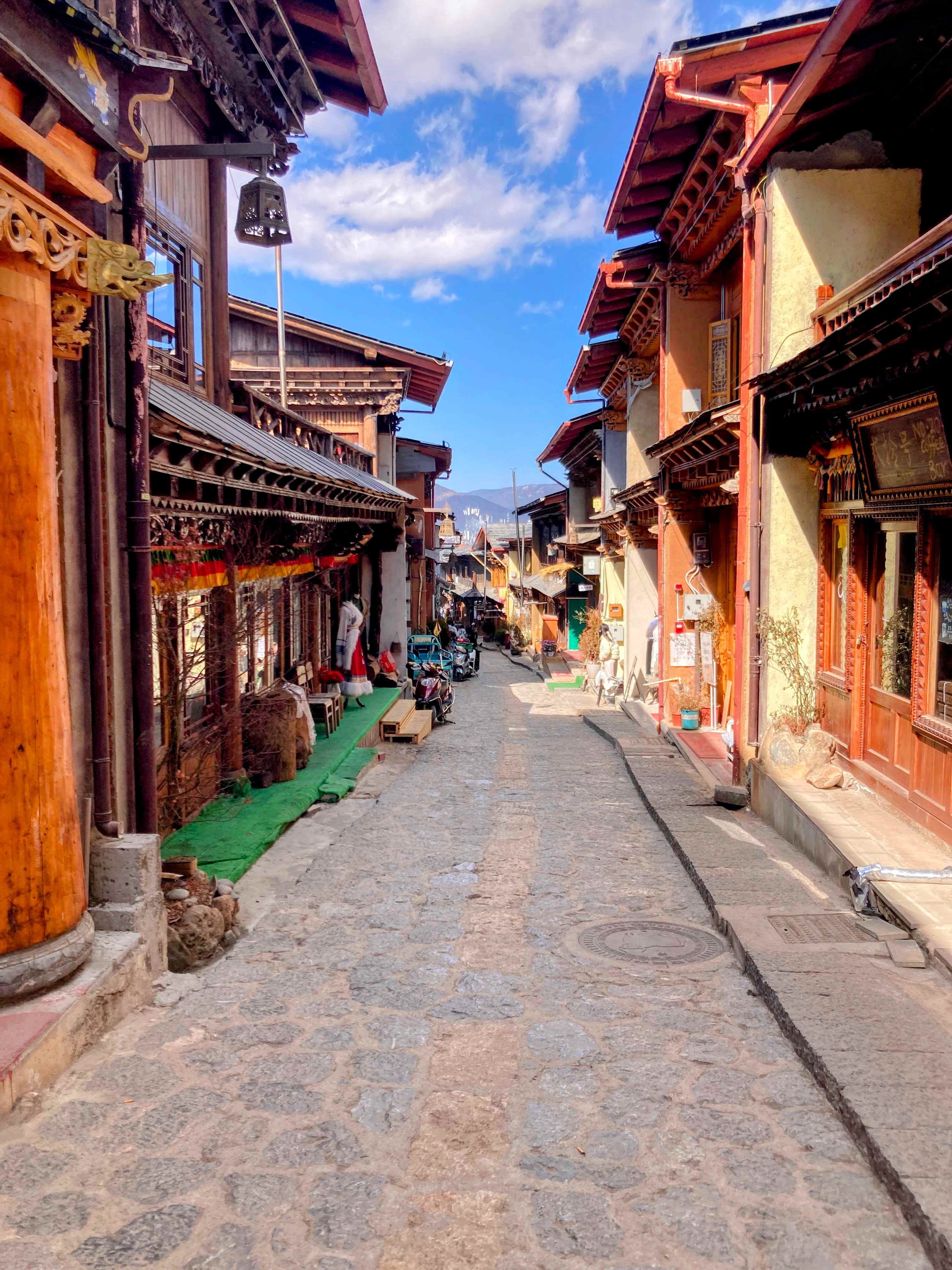
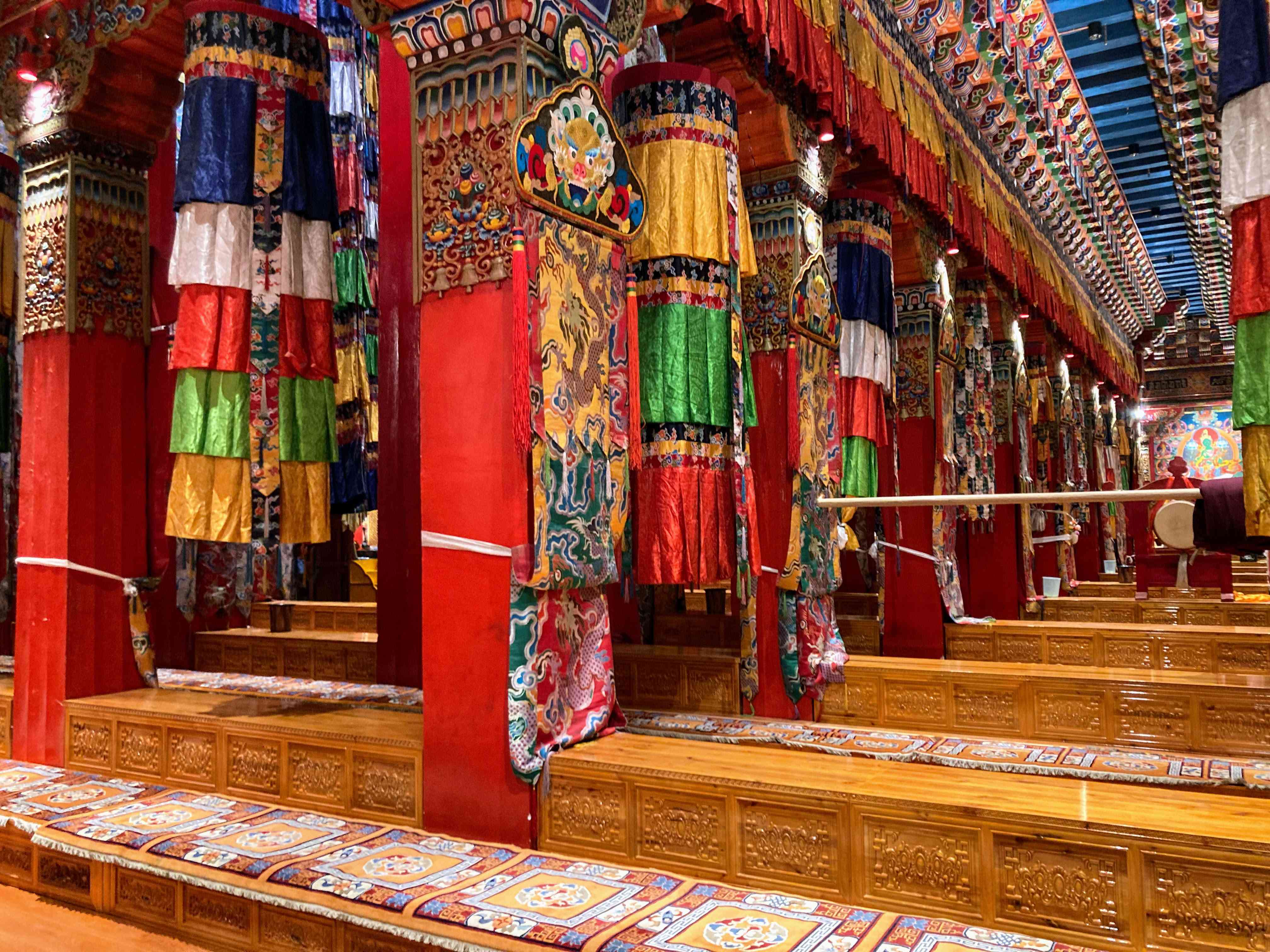
Our trip in detail
As soon as we crossed the border we took a train to Kunming, where we spent a few days planning our first week in China. After some research, we decided on our itinerary:
- Kunming, 3 nights
- Shangri-La, 1 night
- Tiger Leaping Gorge, 2 nights
- Lijiang, 1 night
- Dali, 1 night
- Kunming, 1 night
Kunming
Coming from Vietnam by train, our first stop was Yunnan’s capital city, Kunming.
Kunming is known as the city of eternal spring, because of its mostly sunny and cool weather. After the last days in the North of Vietnam, where the weather wasn’t as merciful, being in a warm place was a pleasant feeling.
The historical center is big and well-preserved, full of cafes, restaurants, bars, and shops. 20 minutes away from the city the Taoist Golden Temple is something not to miss. It is a complex of different buildings surrounded by a beautiful park and it contains the biggest bronze building in China.
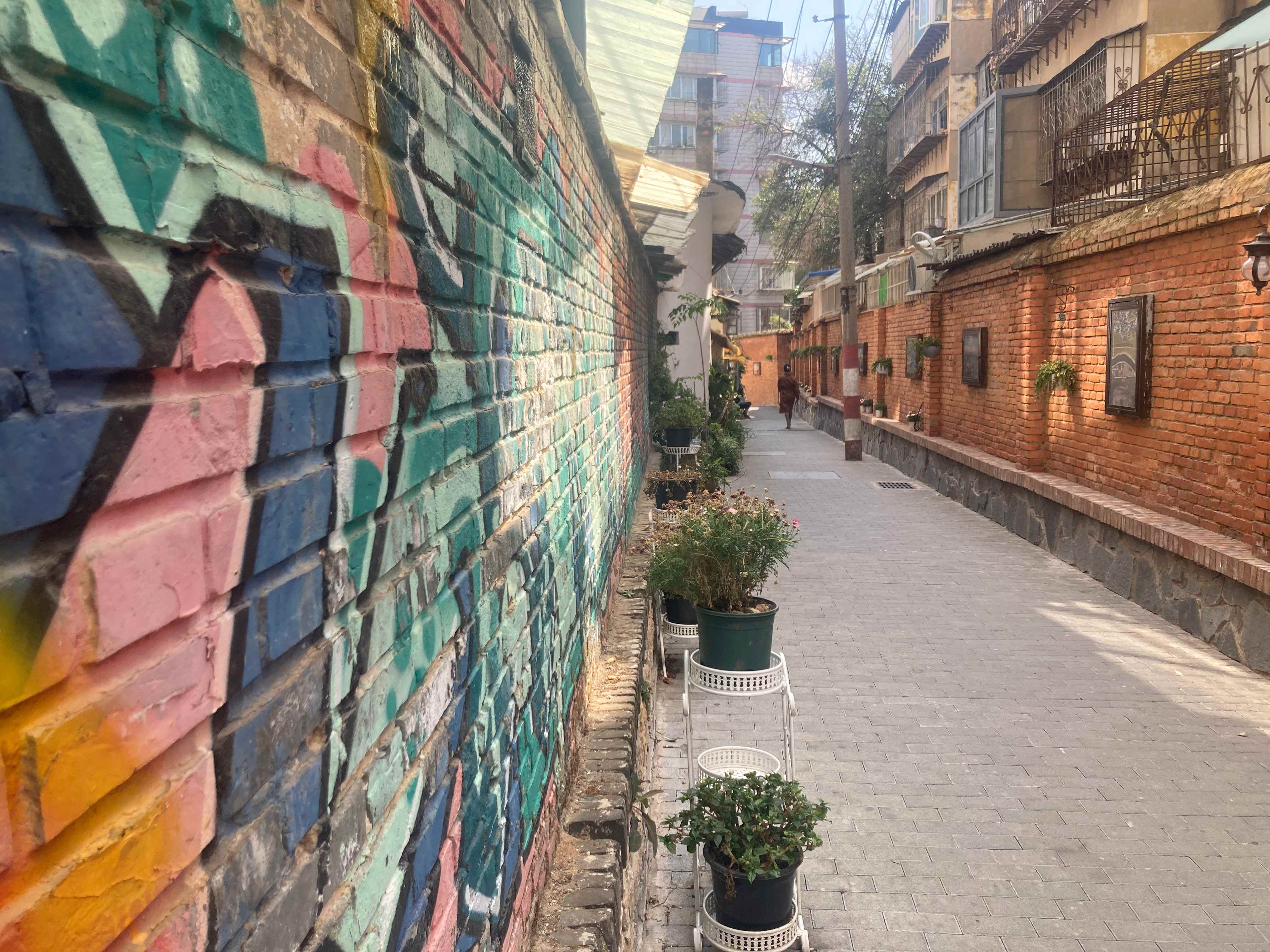
About 90km from Kunming there is the Stone Forest, famous for its rock formations that resemble a tree forest. Our hostel was organizing trips to both of these attractions, but we decided to spend more time in the city and skip the Stone Forest.
We slept for four days in a lovely hostel called Kunming Upland Youth Hostel, which had a perfect location to explore the city. The city's first impression was silence. The center was incredibly silent and clean considering the city has 6 million residents. The majority of the cars were electric, removing the most constant sound of all the other big cities we’ve been to during the trip.
Shangri La
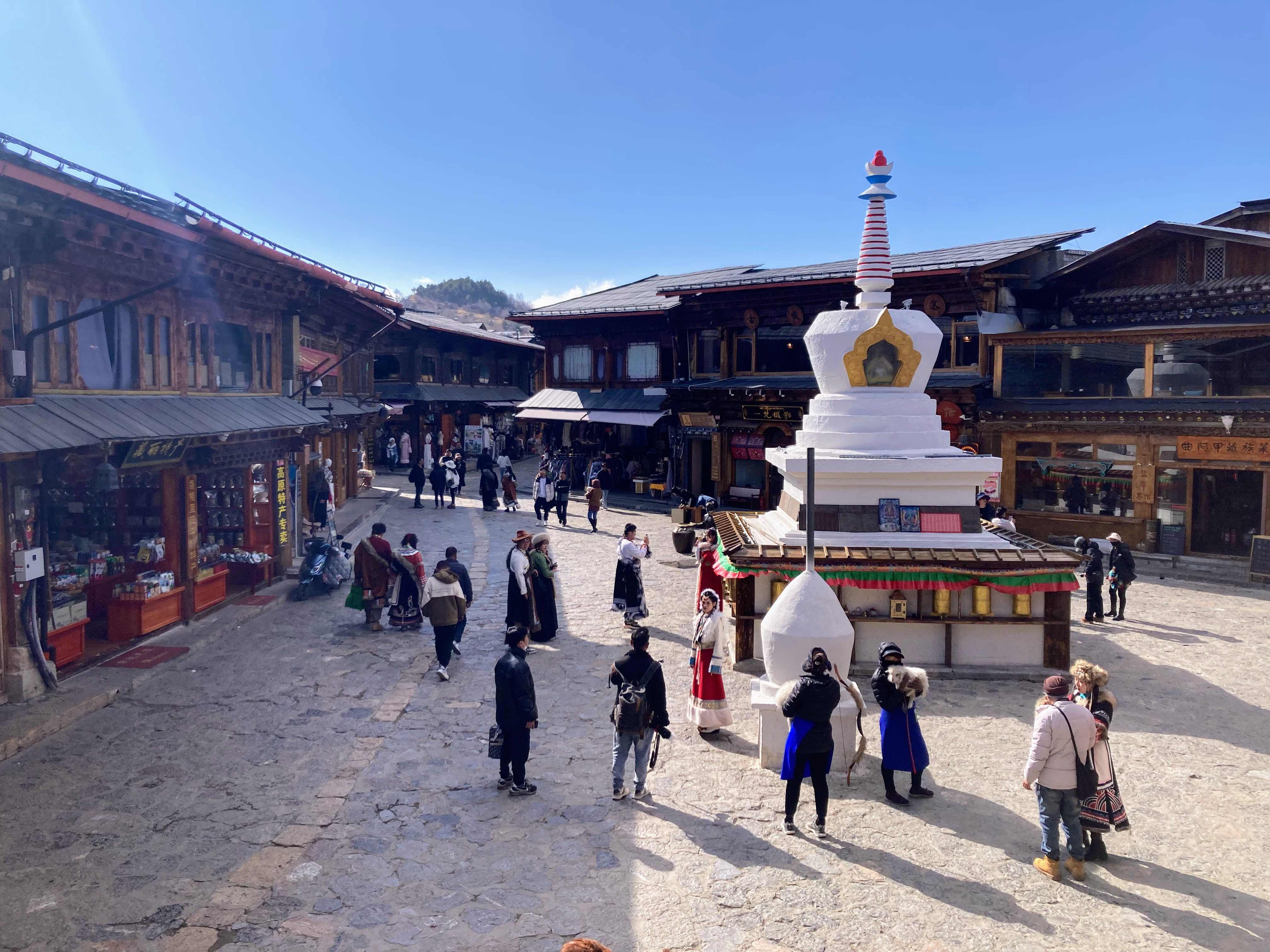
After Kunming, we took a five-hour train to the north of Yunnan, close to the Tibetan border, to Shangri-La. The city was called Shangri-La a few years ago after the famous Tibetan city with the same name described in the book Lost Horizon. It is indeed something close to an imaginary place, with half of its historical center being reconstructed after a fire burned it down in 2014. It is also a very popular tourist destination, and as we discovered as soon as we arrived, it is common for tourists to dress in costumes that slightly resemble typical Tibetan clothes, and wander around the city to take pictures. It is never the less a beautiful historical center, with wooden buildings and mountains all around it. It is located 3100m above the sea, so there was a big temperature difference with Kunming, but the sun was high so it was still pleasant to walk. Walking uphill we reached a secluded monastery with a beautiful view of the city, and the monks welcomed us gifting some apples.
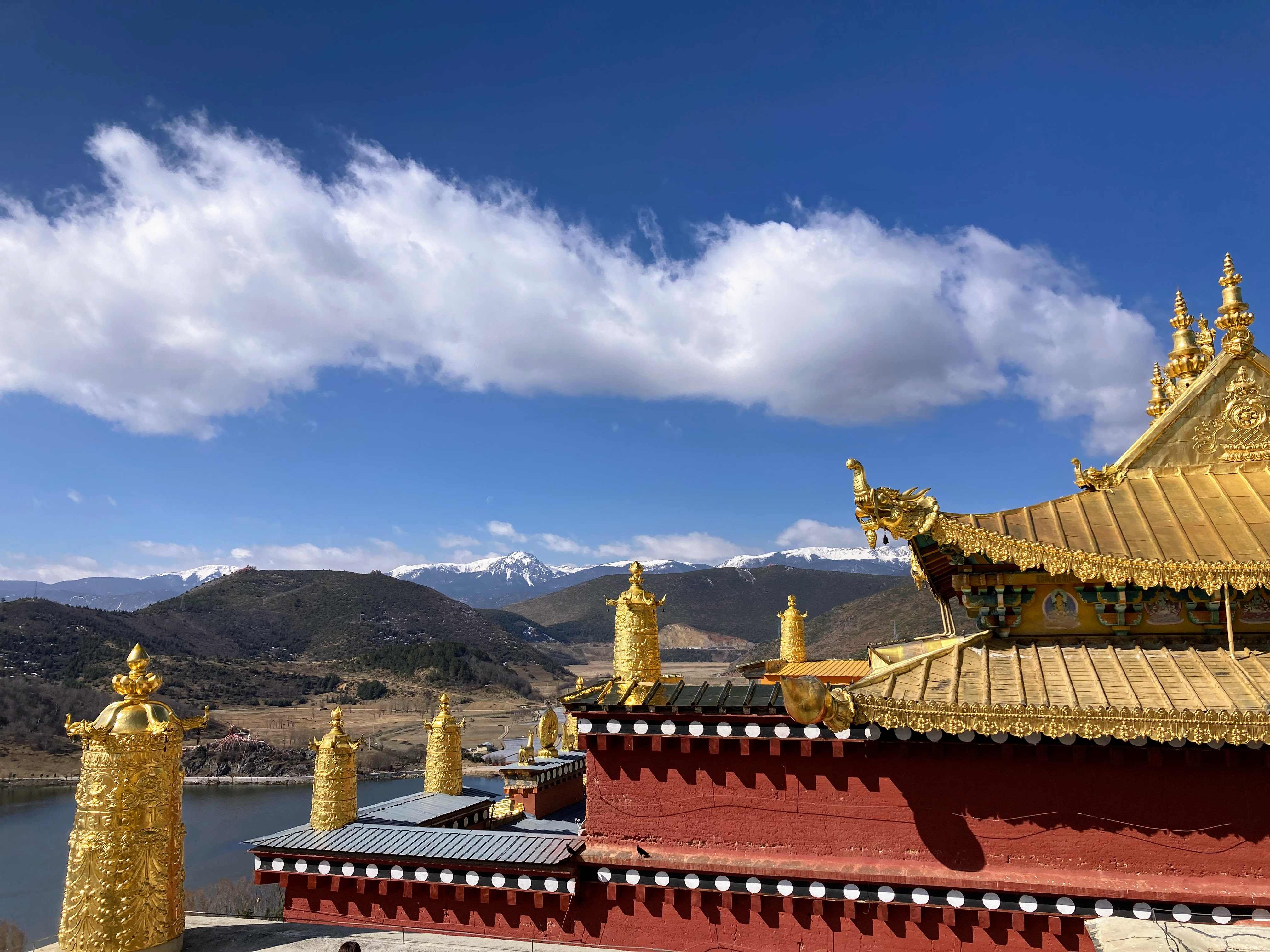
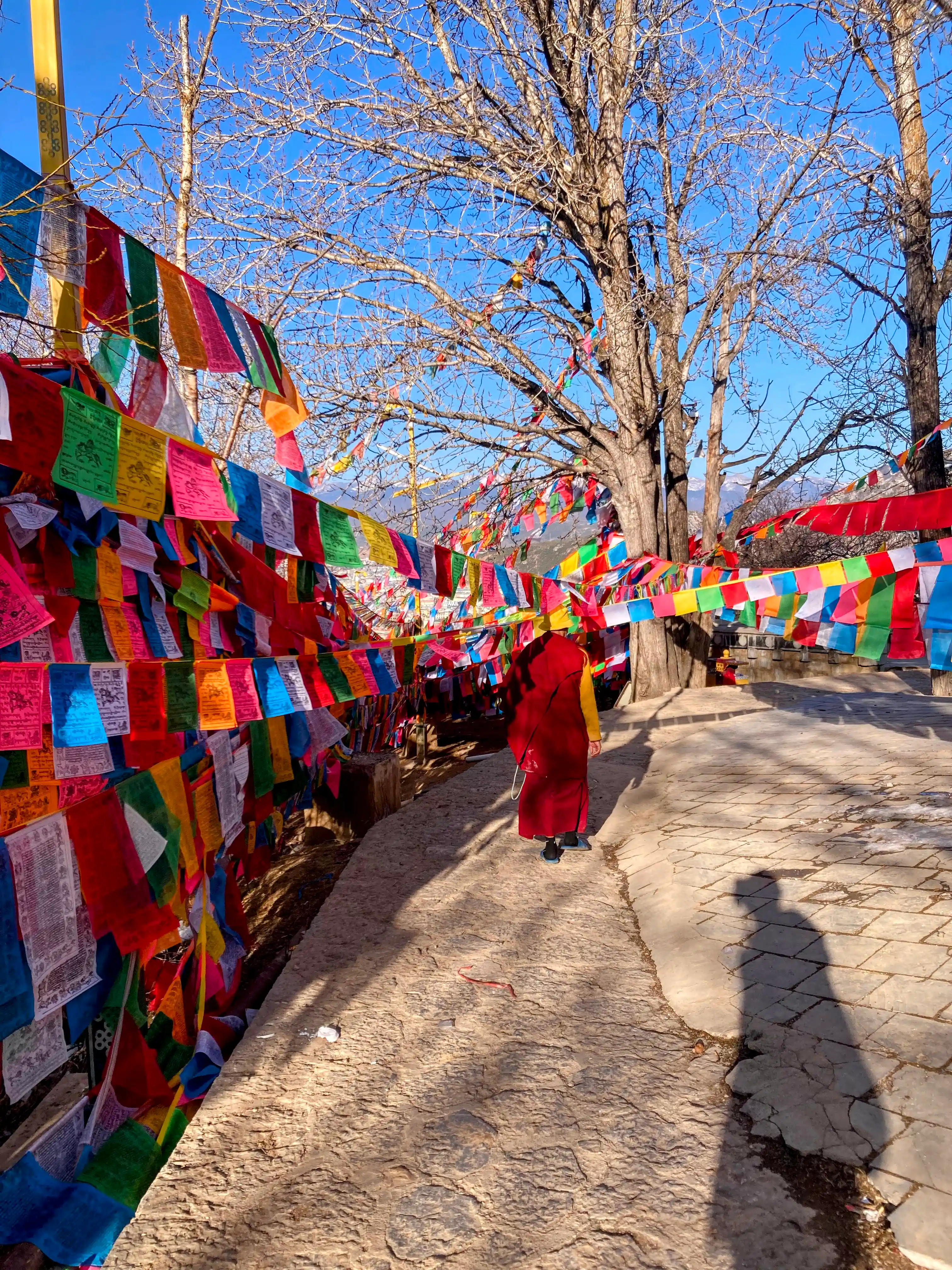
On the second day, we visited the Tibetan monastery of Songzanlin, or Ganden Sumtseling, where more than 700 monks making it one of the greatest Tibetan monasteries. Not only the temples are impressive, but also the mountains around it make it a spectacular setting. We reached the temple taking a bus from the center of Shangri-La, until the entrance of the complex. From there it is possible to pay for a bus until the first steps of the temples or walk one kilometer (as we did).
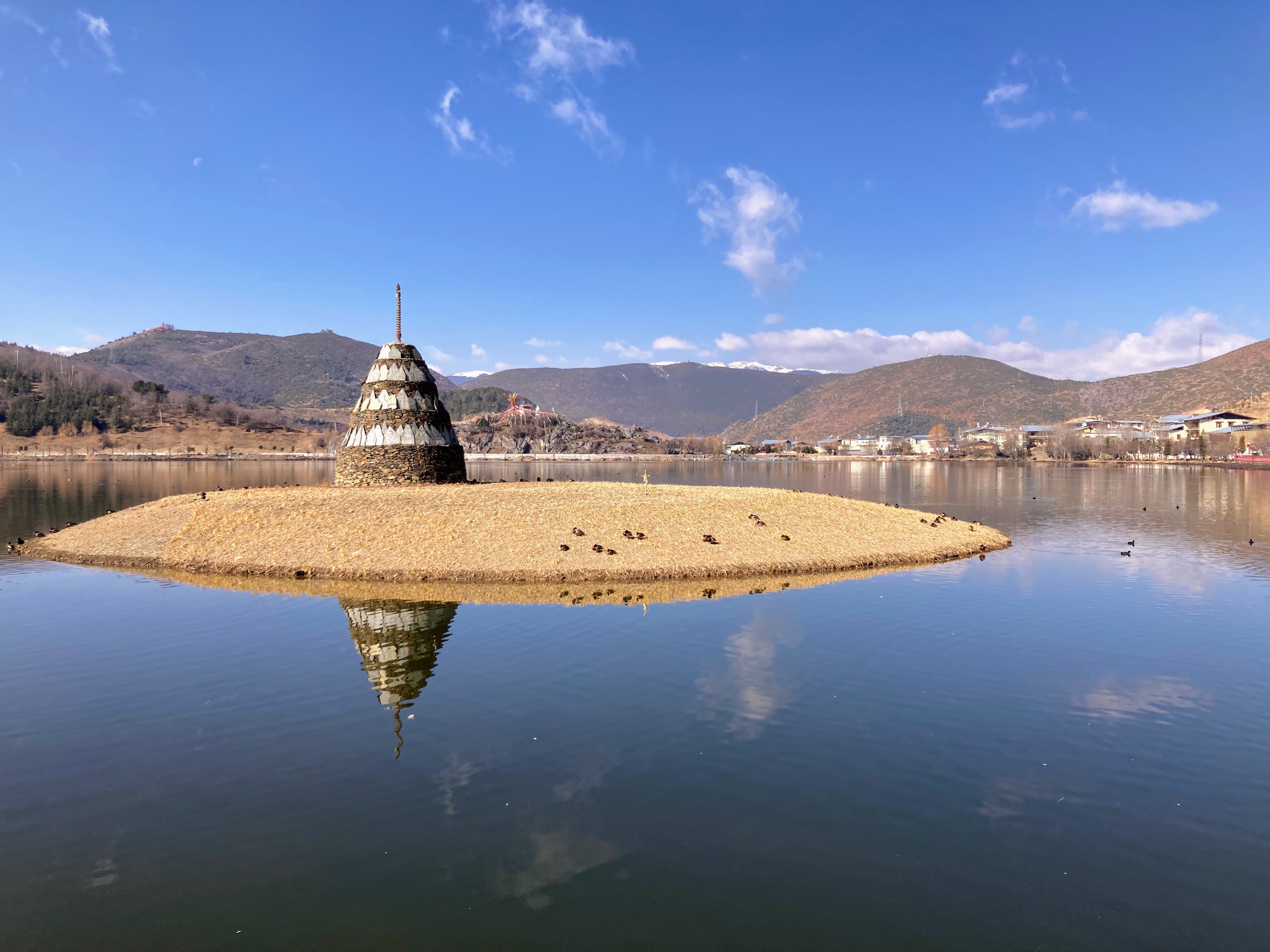
Tiger Leaping Gorge
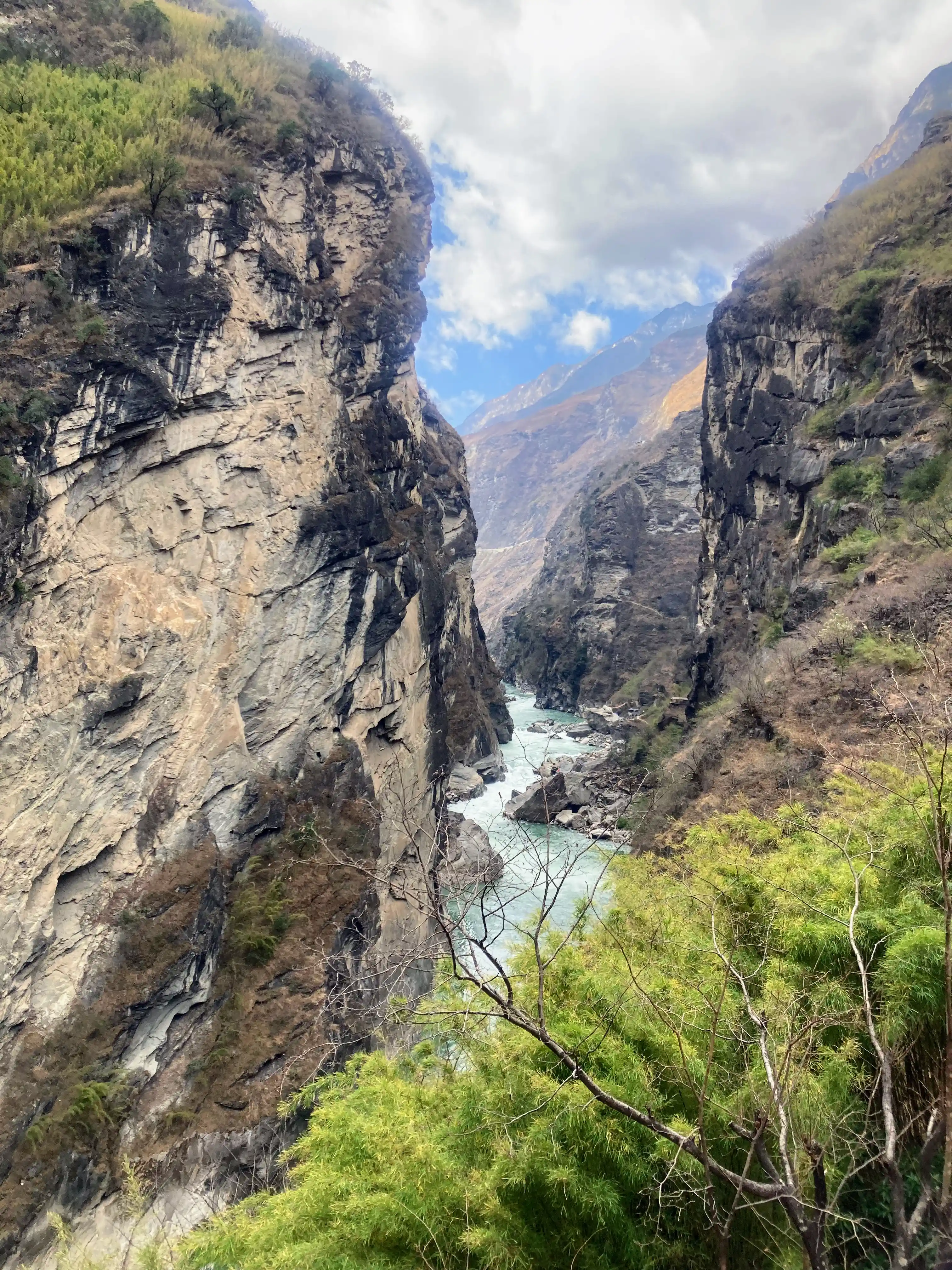
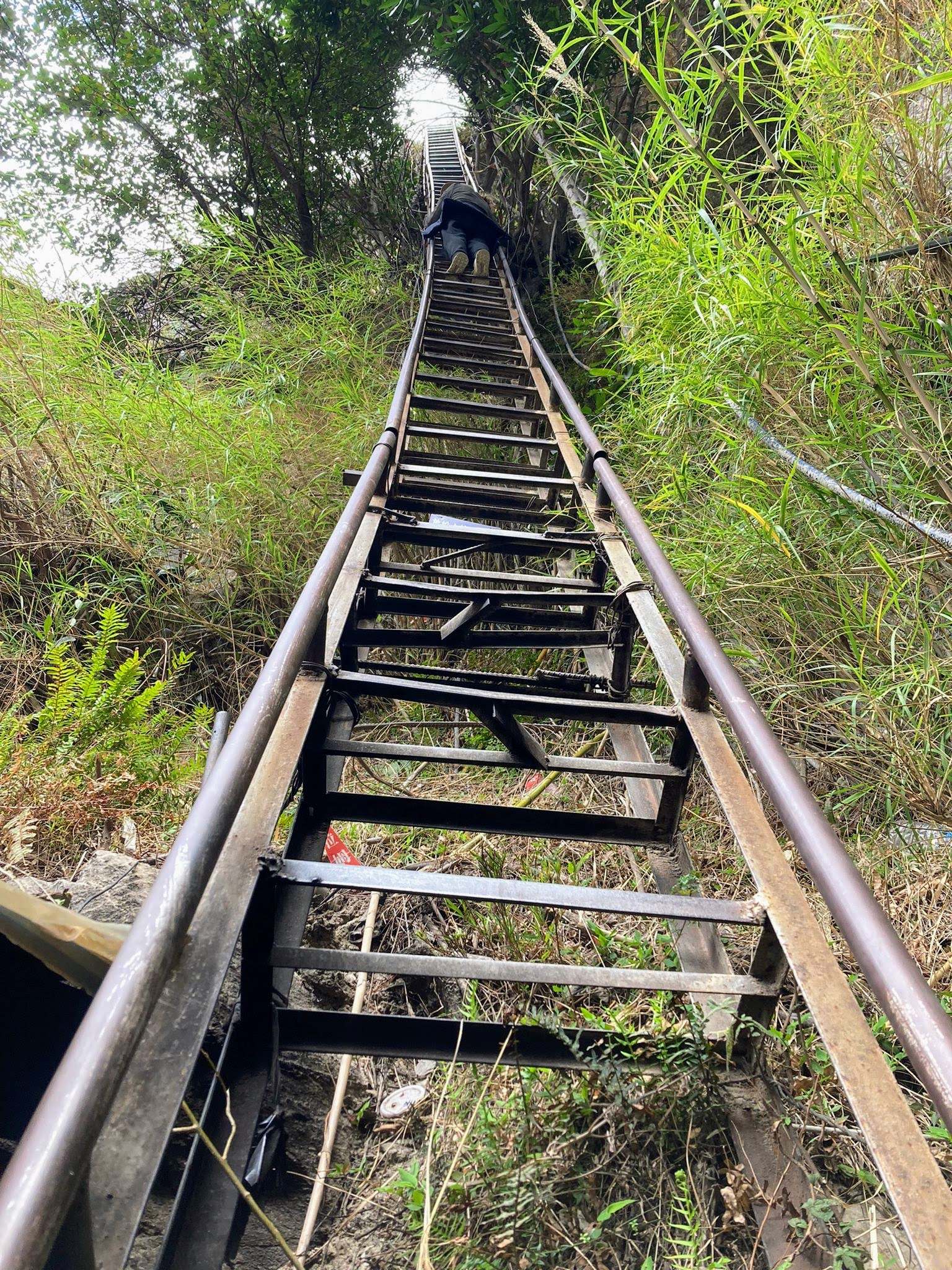
From Shangri-La station, we took a minibus asking to go to the Tiger Leaping Gorge. We knew the departure time of the bus thanks to the help of the owner of the guesthouse where we slept, who wrote our destination on a piece of paper in Chinese characters so that we could ask for the correct bus at the bus station. There were only two rides on that day for the Tiger Leaping Gorges. The bus driver left us at Guobianzhu at around 3 p.m., and from there we walked a few kilometers to the ticket office. From the ticket office, we then walked 6 kilometers to Nuoyu Village, where we had dinner and slept in the only guesthouse there, the beautiful Naxi Family Guesthouse. We decided to do the first few kilometers in the late afternoon to be able to start early the next morning and complete the hike in one day. The morning after we left after breakfast at around 8:30 a.m., and walked through the gorge’s mountains. It begins with the 28 bends, a sequence of curves that bring you to the peak after a bit more than an hour.
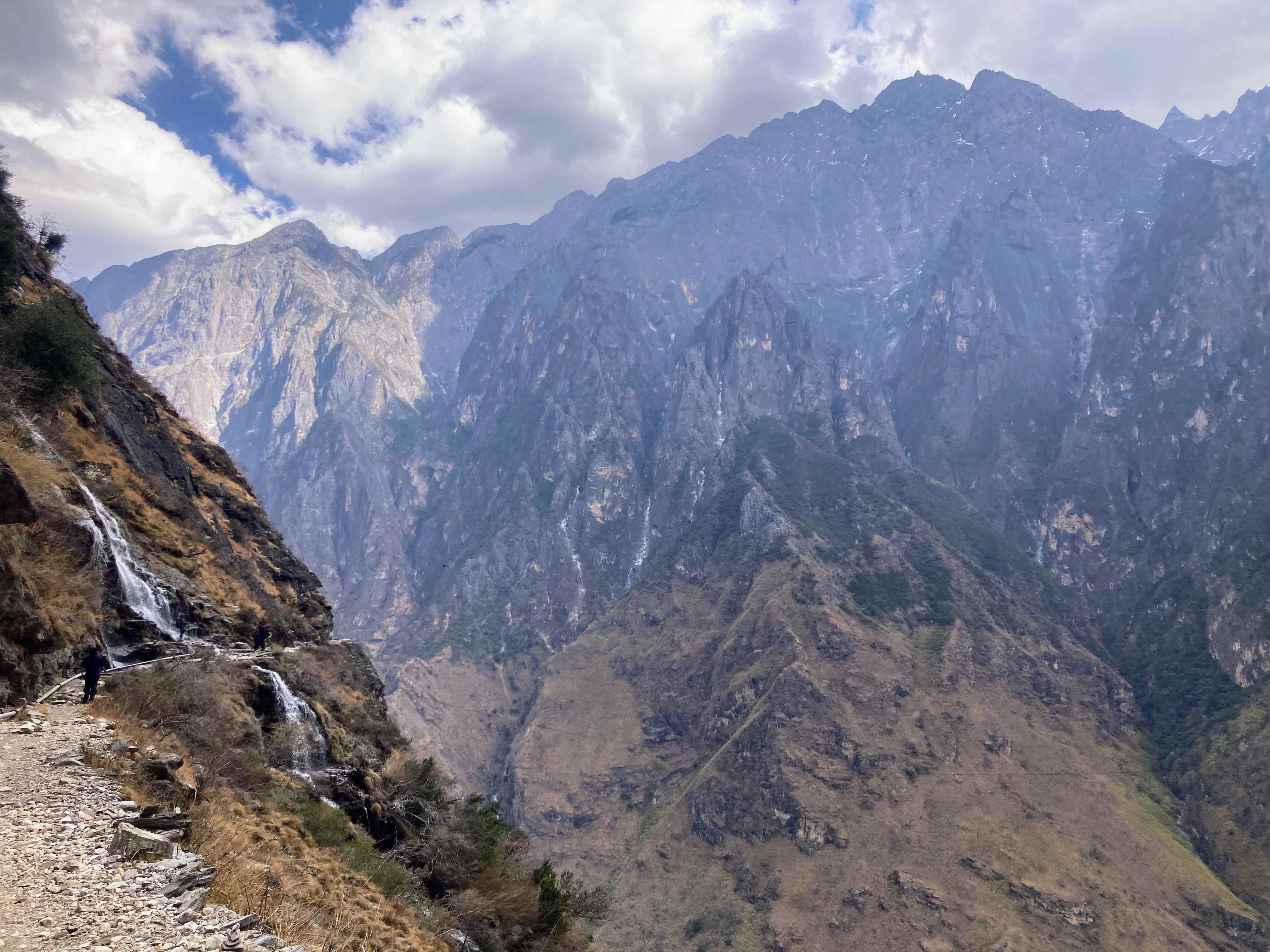
At the top a lovely old lady sells coffee and tea from a small kiosk and, incredibly, accepts AliPay. We stopped for lunch at the halfway guesthouse, with an incredible terrace on the gorge, and then down to Tina’s Guesthouse. It is one of the most beautiful sceneries we’ve ever seen, especially in the second part of the hike after lunch. The morning after we walked from Tina’s down to the river, and again it was an incredible hike craved in the rock, with some crazy water rapids, a 50m high vertical ladder, and some Tibetan bridges. During the hike there will be some locals asking for fees, some of them are mandatory to pass, and some others are just for the viewpoints.
Lijiang
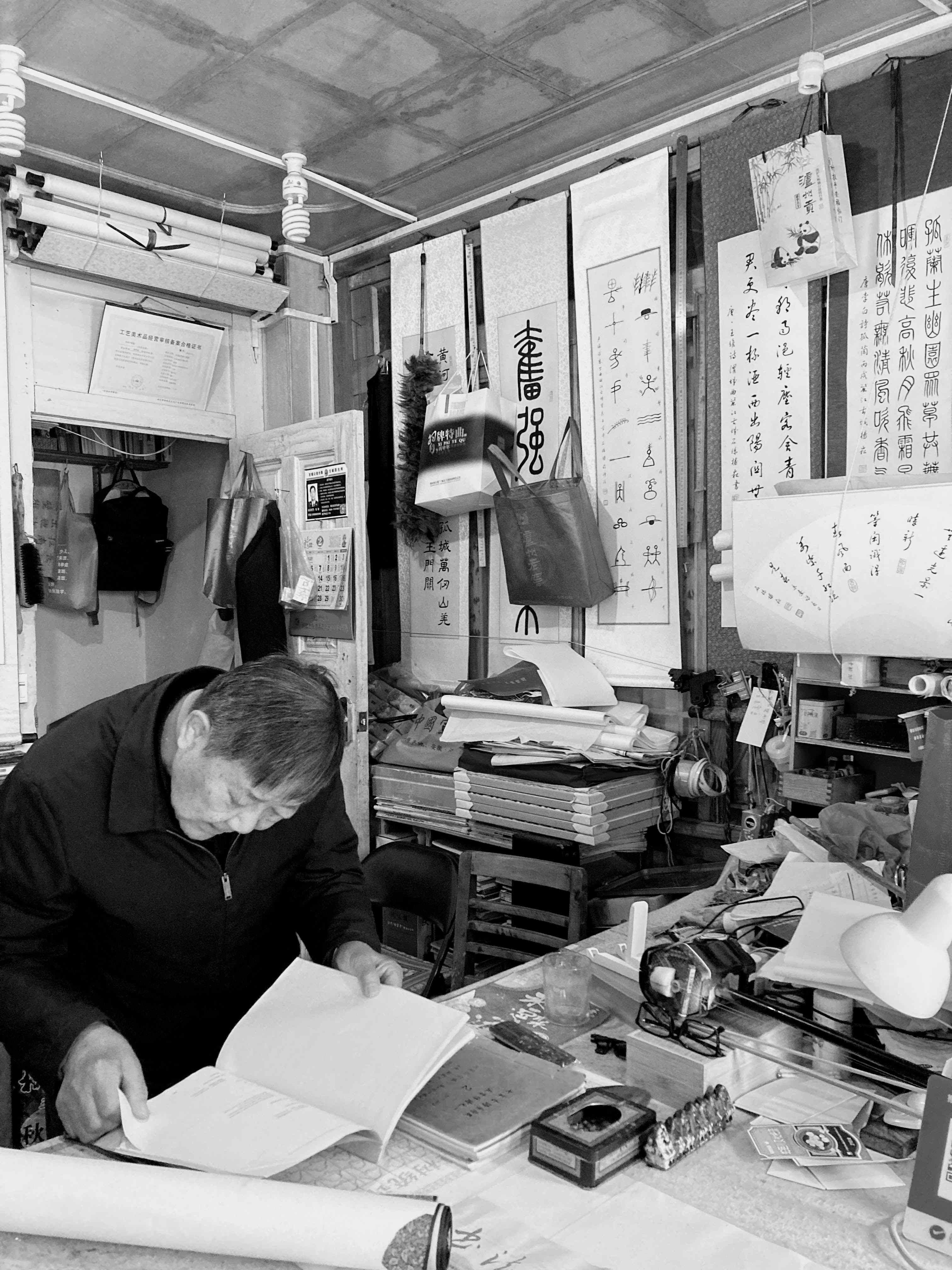
Few buses leave daily from Tina’s Guesthouse to Lijiang, and it is possible to book directly from the hotel staff. It is only one hour from there to the city. Lijiang’s center is probably the most beautiful among the cities we visited in Yunnan. As in Shangri-La, the old town is packed with tourists, the majority of whom wear costumes. It is in any case enchanting with its small stone bridges and canals. It is part of the UNESCO World Heritage Sites.
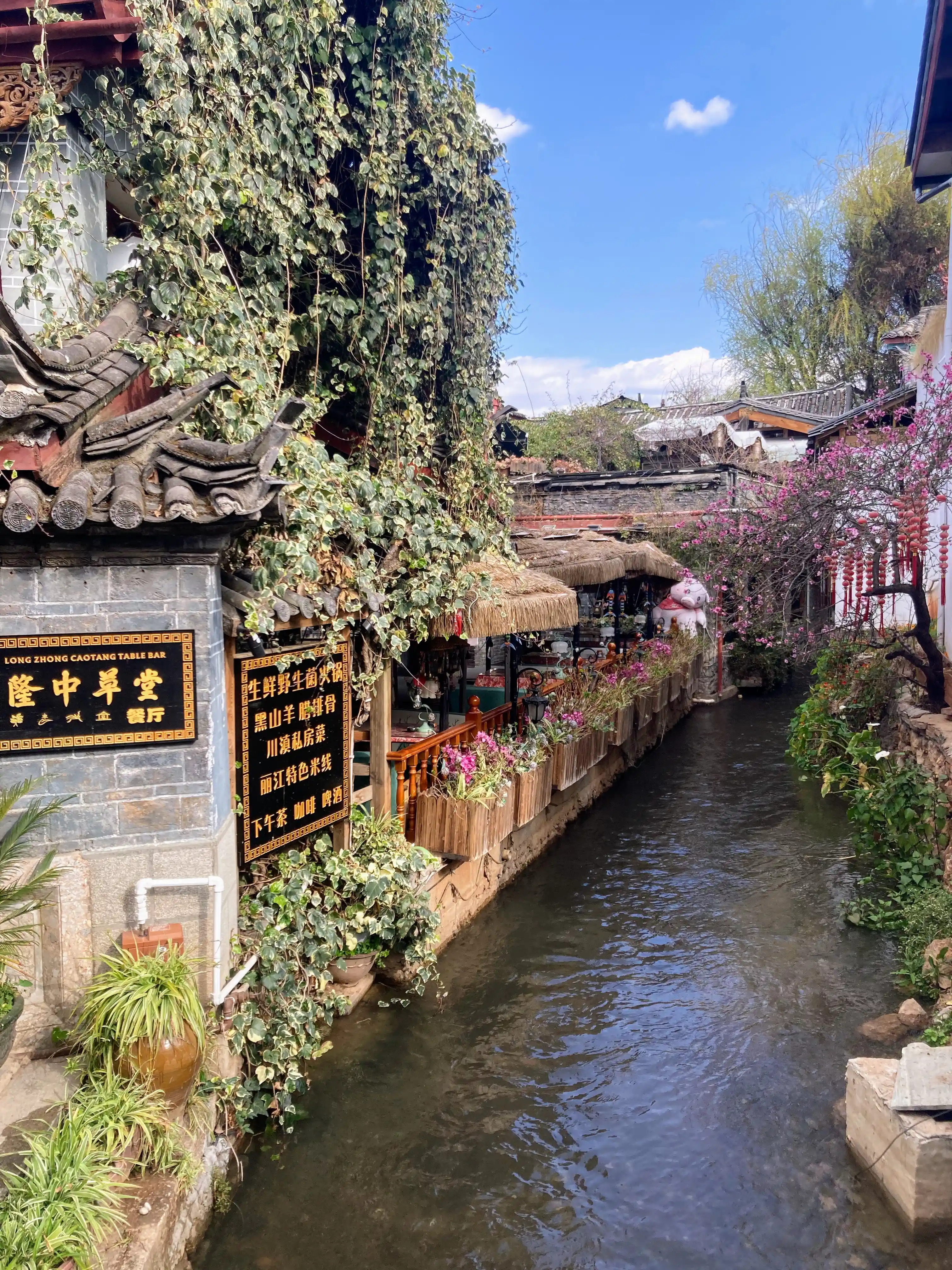
Dali
From Lijiang to Dali is a two-hour train ride. The most famous attractions of Dali are the Three Pagodas and the old town. The old town is once again very touristy but beautiful. Yunnan is home to many minorities and in Dali, we had dinner in a great Bai restaurant called Méizi Jǐng. It is said that the Bai population has been living in Dali and its surroundings for more than 3000 years. Walking around in the old town we found a small Christian church, which was an unusual encounter in a trip that was so far centered on Buddhism.
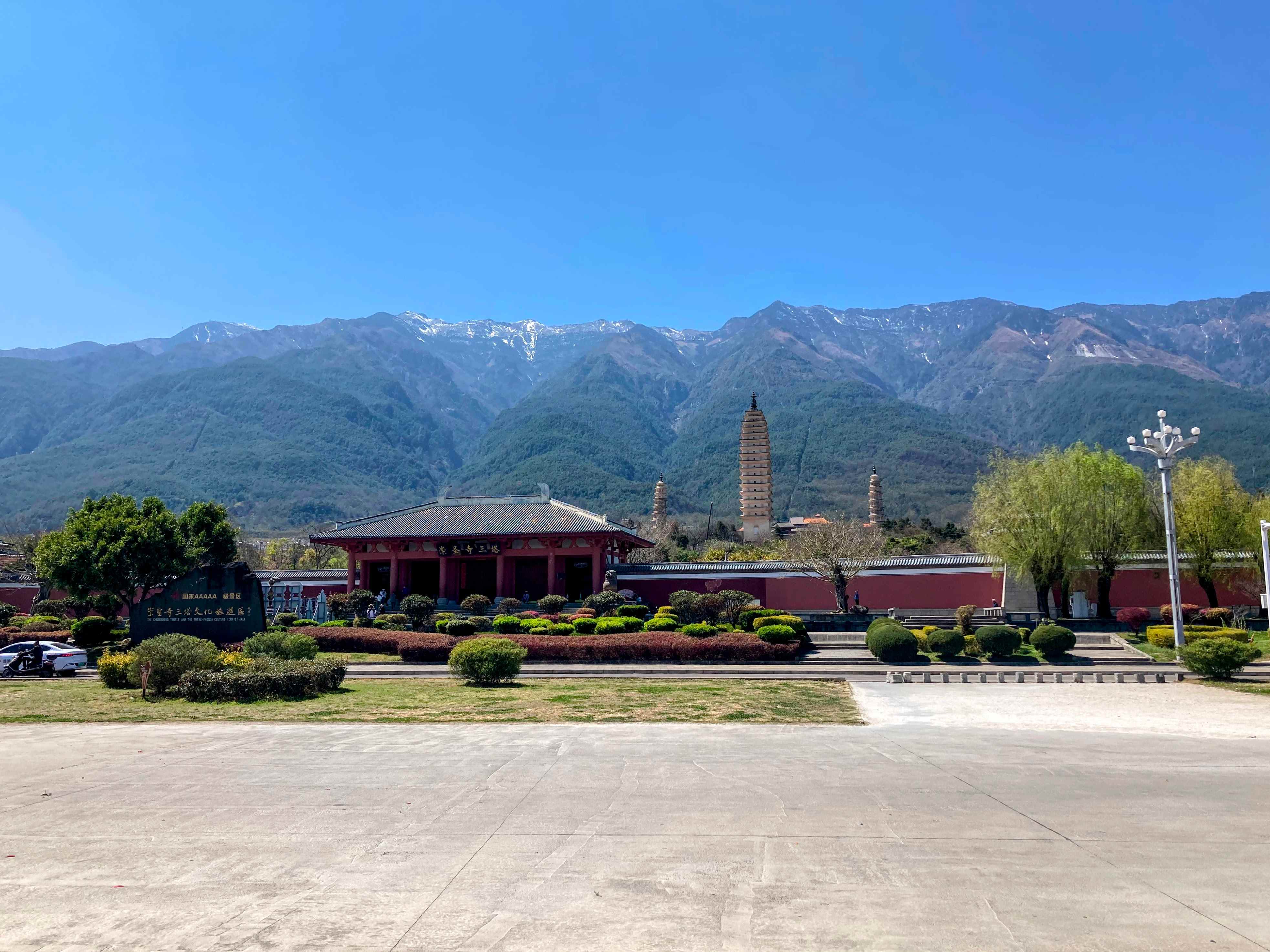
After Dali, we spent one last night in Kunming before taking the train early in the morning to Guilin, where we spent 3 more days before Hong Kong. Kunming is a necessary stop for any bullet train leaving the region. Sleeping one last night there was also useful because we booked in the same hostel, asking to keep our big backpacks in their luggage deposit for one week so that we could travel only with two small backpacks.
We hope you enjoyed our Yunnan's itineraries. If you have questions, doubts, or improvements, feel free to get in touch! Enjoy Yunnan ❤️
